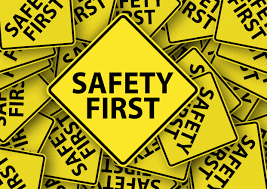
For people with ambulatory issues, staircases pose an ever-present challenge to their daily routine. What many people take for granted, the act of traversing a set of stairs can be a hazardous and arduous task for those who are dealing with issues related to aging and physical degradation of the lower body. For these people, stair lifts are a blessing as it allows them to reclaim a level of normalcy in their lives.
As with any other mechanical object designed to perform a specific task, there are limitations. Unfortunately, some stair lift owners will bend the rules of use in ways that they believe should not cause problems. As with Icarus, who flew too close to the sun with wings of wax, these seemingly harmless acts can lead to injury for the user and damage to the stairlift.
Here are some of the more common and, in many cases, situations where an injury can occur when using a stair lift and how to avoid them:
● Falls due to improper or lack of use of seatbelts – Some of the most common injuries related to stair lifts involve broken bones, dislocated joints, or head injuries. In almost all of these injuries, a seatbelt was not used. As most stair lifts come with seatbelts (and if you are purchasing one and it does not have a seatbelt as part of its standard equipment, continue to shop around), using them is essential. But as we learned when seatbelt use in cars became mandatory nationwide, many did not use the seatbelt as they believed they would not have an accident. The same is true with stair lifts. If a staircase is only a few steps, many would think using the seatbelt is not necessary. But as seniors (who are among the largest consumers of stair lifts) are more prone to easily broken bones and dislocated joints due to aging, then the smallest fall could be trouble. The easiest and most logical solution to avoid injuries due to falls from stairlifts is to always use the seatbelt.
● Injuries due to not using the stairlift as designed – Even the most cursory look at a stair lift will indicate they are meant to be ridden while seated. But, as with not using seatbelts, various injuries can be caused when the stair lift is used improperly. As most stair lifts come with a fold-down footrest, some users mistakenly believe that the footrests can accommodate their full weight when standing. We cannot stress enough that you should NEVER stand on a stair lift, regardless of how short a trip it will be. Stair lifts are designed to be operated a certain way with the proper weight distribution of the user. Standing on the footrest will likely lead to the stair lift malfunctioning or breaking altogether. Additionally, if the user has issues with balance, standing on a small platform of a moving device is asking for trouble. As all stair lifts are built to provide a comfortable ride, much heartache (and other aches) can be avoided if the user simply sits down and enjoys the ride.
● Injuries due to improper use of a stair lift – A stair lift is designed to move a single rider up and down a staircase safely…period! Using the stair lift to help you carry something up and down the stairs is beyond its design. Of course, there are some things you can carry with you but they should be easy to carry and not weigh more than a few pounds. So if you are heading upstairs with a favorite book or your tablet, no problem. If you are planning to transport anything larger than that you should look for another way of getting that item from point A to point B. This includes even the tiniest of pets. Another improper use is to give the kids or grandkids a ride. The seat is designed for one, no matter how small. This is especially true for infants and toddlers, who require the assistance of adults to get around, to begin with. It also should be pointed out that a stair lift is not a toy or an amusement park ride. No matter how much the little ones ask to take a ride, the chair’s use should be restricted to the person it was purchased for. Excessive use, especially by little ones who will view it as a toy or ride (and, like most kids, be bouncing around), will lead to greater wear and tear as well as potential malfunctioning if there is unseen damage to the mechanism due to improper use. Think of a stair lift like a car, only to be operated in a specific way and by a trained operator.
● Injuries due to stair lift being worn or improperly maintained – A stair lift is a mechanical device that has a motor-driven mechanism powered by electricity. In other words, like a car, it requires regular maintenance to ensure it is working properly. We have all been there where our car is making a noise but it is still running properly so we tell ourselves that we can worry about the noise later. Then we find ourselves broken down somewhere waiting on a tow truck or mechanic to get us on our way. While a broken-down stair lift will not leave us stranded away from home, it can require the return to hazardous activities that the stair lifts were designed to alleviate. The company that sells and installs your stair lift should also provide maintenance or refer you to a reputable and trained stair lift maintenance provider.
We hope that this post provided you with valuable insights that help you to avoid injuries. If you are looking to purchase a stair lift, Patriot sells, installs, and maintains stair lifts for both inside and outside your home. Additionally, if your home has an architecturally unique staircase, we can design a custom stair lift that conforms to your needs.